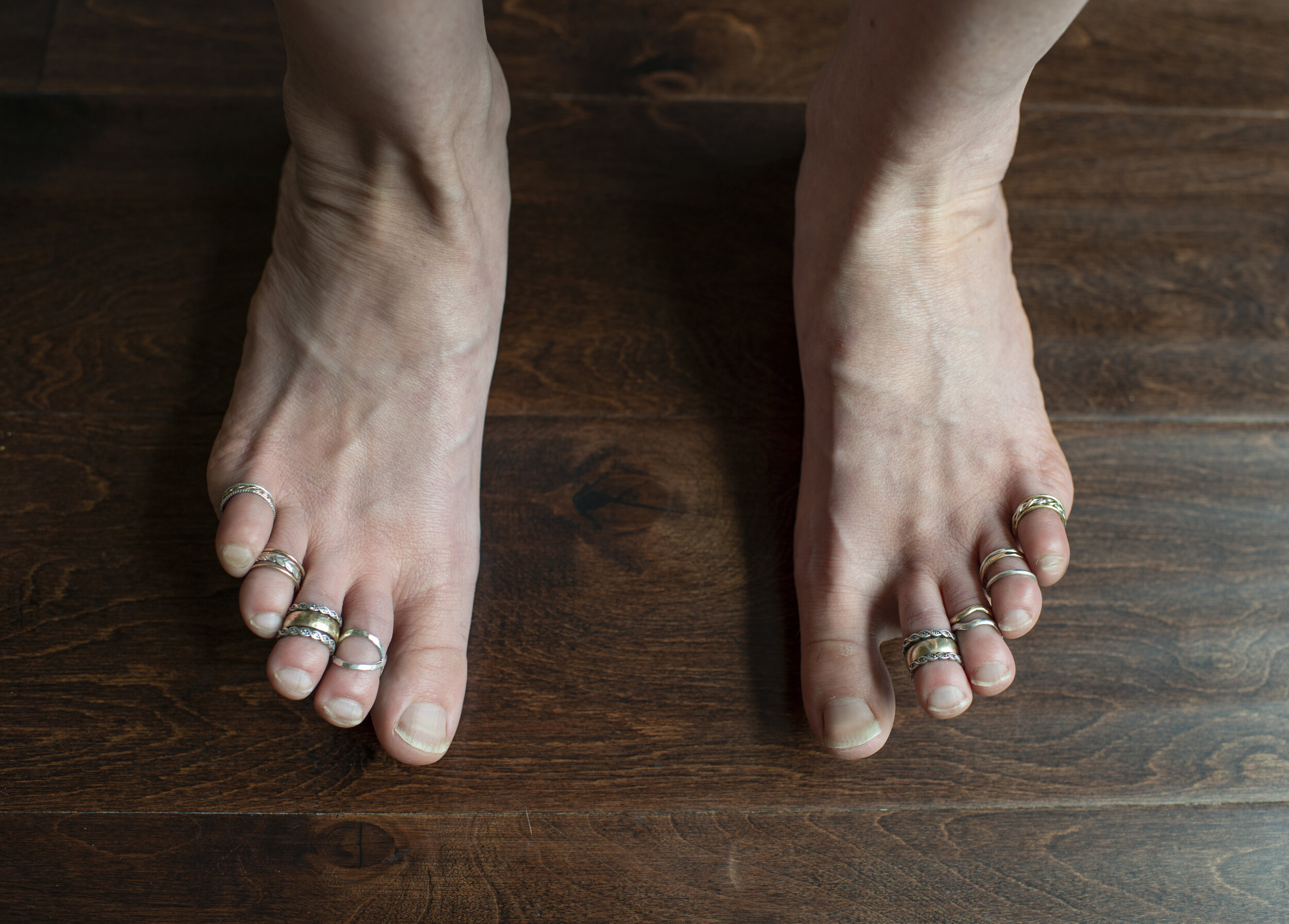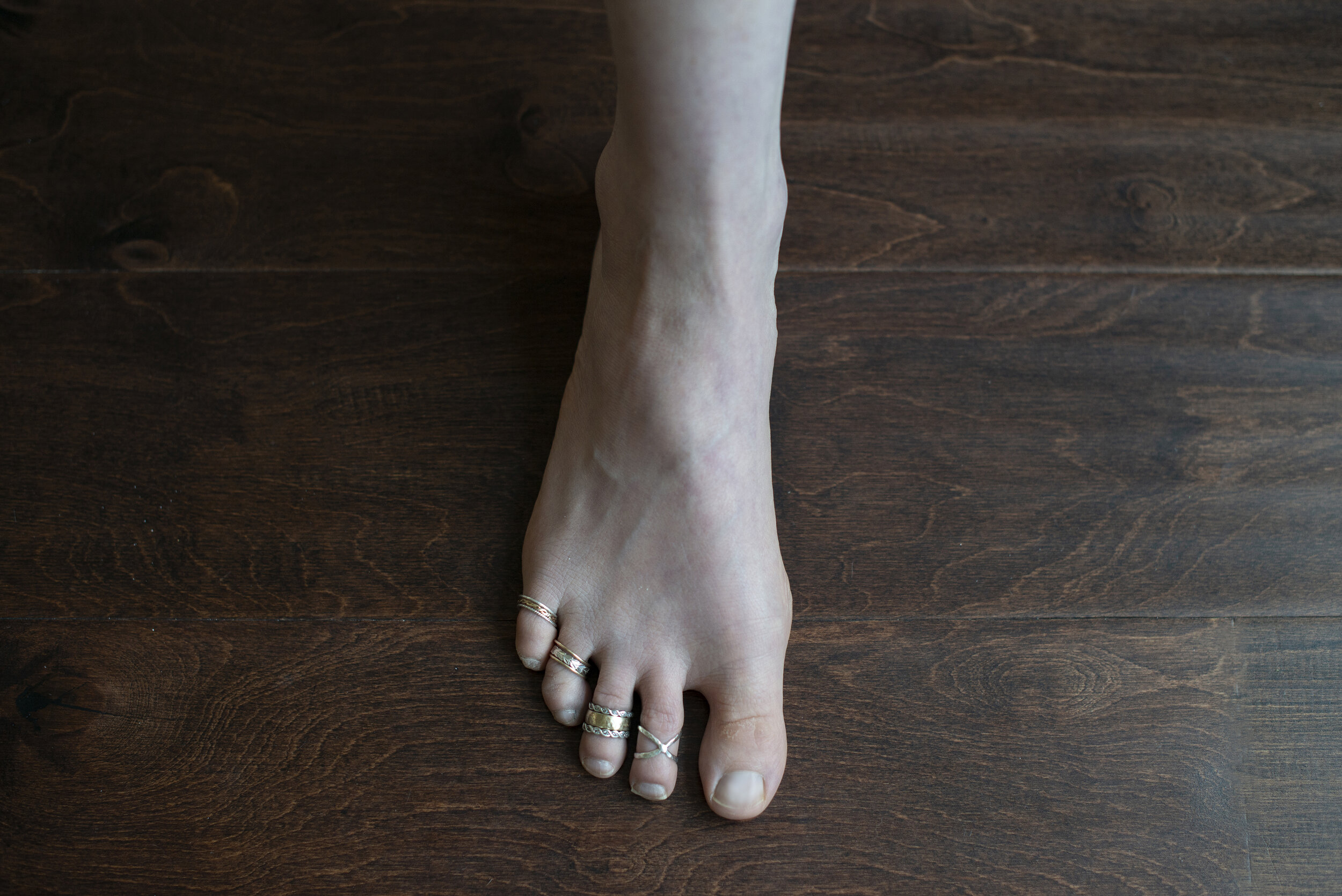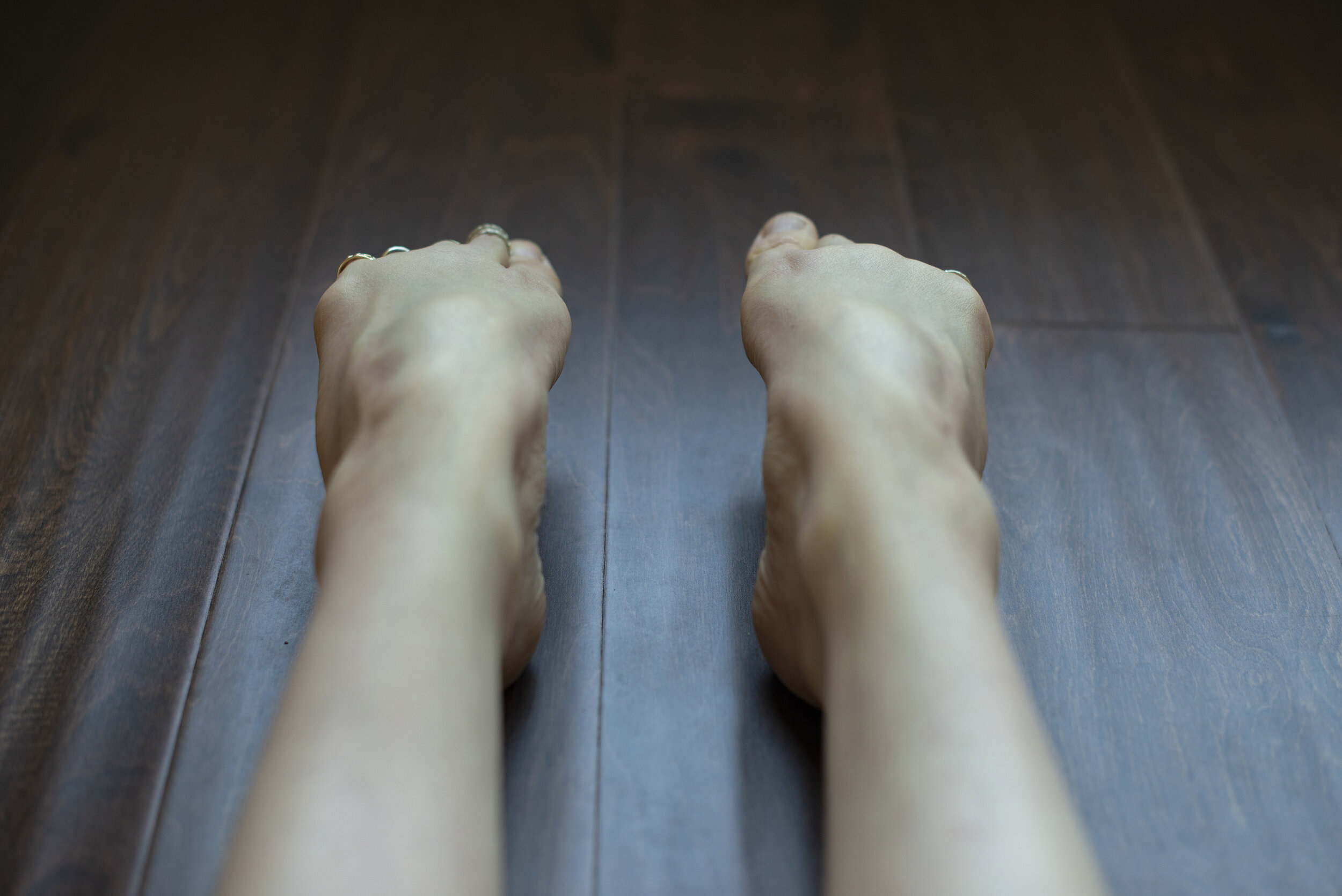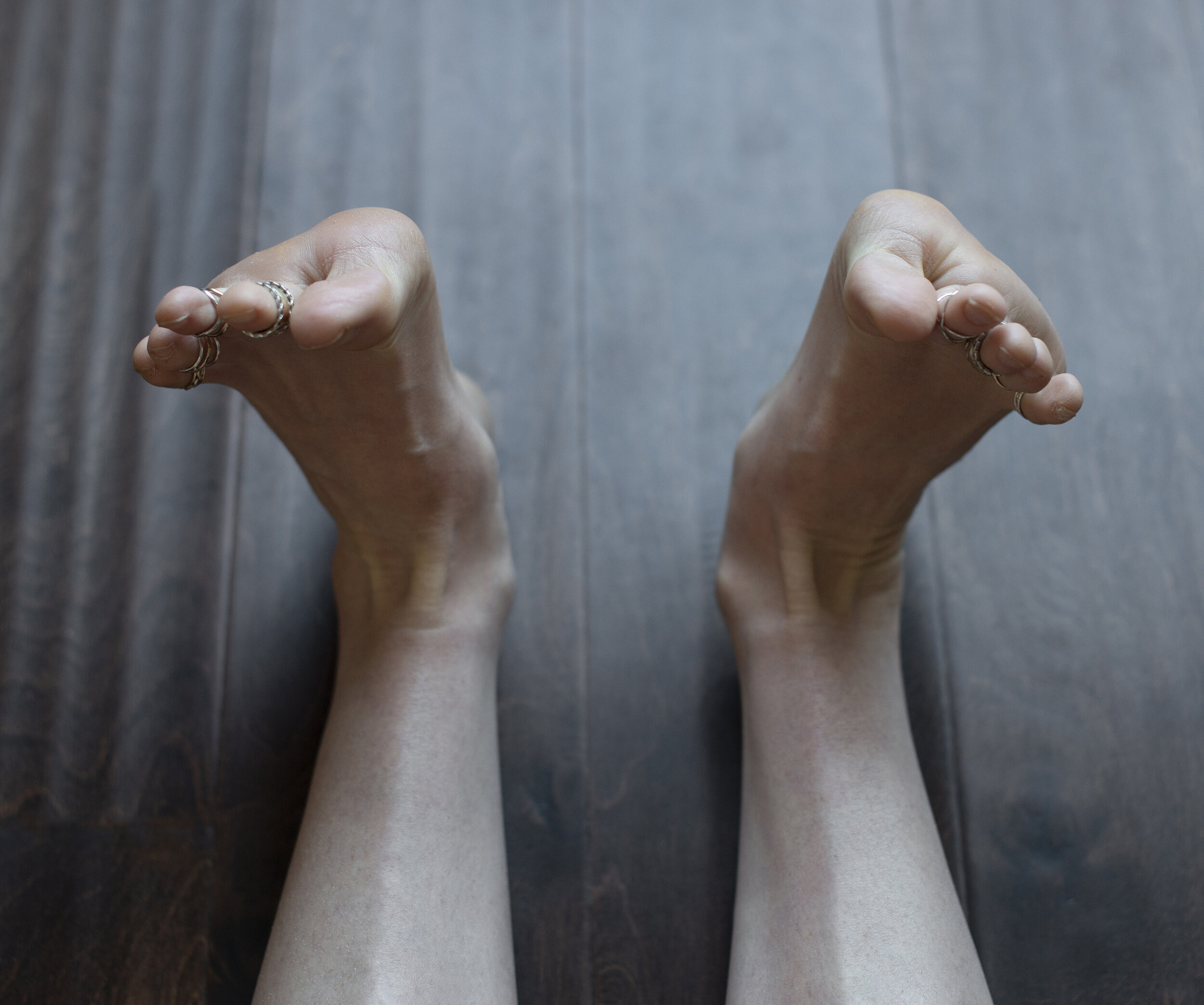Learn the Difference between Inversion & Eversion in Your Feet
This blog is part of a series
Digging in just a little bit deeper with our next concept Inversion and Eversion, which are movements in the coronal plane. In Feet Part 1, we talked about the simple movement in the sagittal plane, Dorsiflexion (flex) and Plantarflexion (point). Click here to get a refresher on pointing and flexing.
Eversion and Inversion describe the ankle's limited range of side to side movement from neutral. In case you're nerdy enough to want to know it's up to 25 degrees for Eversion and up to 35 degrees for Inversion. "In"version is turning the self of the foot "in"wardly toward the midline and "E"version is turning the sole of the foot "e"xternally or outwardly away from the midline. Why is knowing this important for yoga? The body is 3 dimensional and the joints move in all sorts of complex ways, to really get into the juicy examples of balanced feet in yoga poses we need to have a common directional language to refer back to.
Inversion is also known as ankle sickling. Why sickling? because it causes the foot to resemble the crescent moon shaped blade of the farming tool called a sickle (example below). Sickling can happen in a flexed, pointed or even neutrally engaged foot. Not only does sickling an ankle require that the outer ankle collapse and the outer leg to not engage fully or maybe even not engage at all, but a sickled ankle not as esthetically pleasing to the eye. While esthetics are not as traditionally important in yoga as they are in aerial and performance arts like trapeze or ballet, it's worth working on your awareness around maintaining nice "lines" whenever possible because nice lines most often indicate good posture, proper muscle engagement, well- developed proprioception and open channels for the uninterrupted flow of prana.
Feet Below: Inversion & Eversion
Feet in Inversion - "In"version is turning the self of the foot "in"wardly toward the midline
Feet in Eversion - "E"version is turning the sole of the foot "e"xternally or outwardly away from the midline.
For Reference: Neutral
Feet Below in Variations and Degrees of Inversion, Eversion, Pronation & Supination
Homework:
1. Sit tall and upright in Dandasana with your knees facing up:
observing the feet:
turn a neutral foot in (inversion) and out (eversion) a few times
then point and flex a few times
then explore inversion and eversion while flexed
then explore inversion and eversion while pointed
repeat while observing the ankles
repeat in Tadasana with your knees facing forward:
2. Reflect on what you've noticed.
Enhancing practice through education that elevates.
Explore: Wild Thing School of Yoga / Wild Thing Photography / Instagram
Copyright © 2021 Wild Thing Photography and School of Yoga, LLC. All rights reserved.
Photography Credit: Wild Thing Photography
Model: Lana @lanareedsparklyunicorn; Alex @alexreyesyoga












